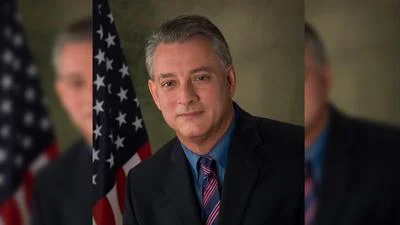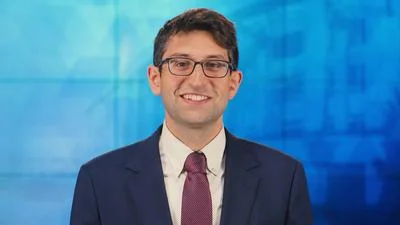The Congressional Record is a unique source of public documentation. It started in 1873, documenting nearly all the major and minor policies being discussed and debated.
“STATEMENTS ON INTRODUCED BILLS AND JOINT RESOLUTIONS” mentioning the U.S. Dept. of Commerce was published in the Senate section on pages S10515-S10518 on Sept. 27, 2005.
The publication is reproduced in full below:
STATEMENTS ON INTRODUCED BILLS AND JOINT RESOLUTIONS
By Mr. CORNYN (for himself and Ms. Mikulski):
S. 1774. A bill to amend the Public Health Service Act to provide for the expansion, intensification, and coordination of the activities of the National Heart, Lung, and Blood Institute with respect to research on pulmonary hypertension; to the Committee on Health, Education, Labor, and Pensions.
Mr. CORNYN. Mr. President, I ask unanimous consent that the text of the bill be printed in the Record.
There being no objection, the bill was ordered to be printed in the Record, as follows:
S. 1774
Be it enacted by the Senate and House of Representatives of the United States of America in Congress assembled,
SECTION 1. SHORT TITLE.
This Act may be cited as the ``Pulmonary Hypertension Research Act of 2005''.
SEC. 2. FINDINGS.
Congress finds the following:
(1) In order to take full advantage of the tremendous potential for finding a cure or effective treatment, the Federal investment in pulmonary hypertension must be expanded, and coordination among the national research institutes of the National Institutes of Health must be strengthened.
(2) Pulmonary hypertension (``PH'') is a serious and often fatal condition where the blood pressure in the lungs rises to dangerously high levels. In PH patients, the walls of the arteries that take blood from the right side of the heart to the lungs thicken and constrict. As a result, the right side of the heart has to pump harder to move blood into the lungs, causing it to enlarge and ultimately fail.
(3) In the United States it has been estimated that 300 new cases of PPH are diagnosed each year, or about 2 persons per million population per year; the greatest number are reported in women between the ages of 21 and 40. While at one time the disease was thought to occur among young women almost exclusively, we now know, however, that men and women in all age ranges, from very young children to elderly people, can develop PPH. It also affects people of all racial and ethnic origins, with African Americans suffering from a mortality rate twice as high as that affecting Caucasians.
(4) The low prevalence of PPH makes learning more about the disease extremely difficult. Studies of PPH also have been difficult because a good animal model of the disease has not been available.
(5) In about 6 to 10 percent of cases, PPH is familial. The familial PPH gene is located on chromosome 2 and was discovered in July 2000. This discovery provided new insights for determining the molecular basis of PPH and opened new avenues of study for understanding the fundamental nature of the disease.
(6) In the more advanced stages of PPH, the patient is able to perform only minimal activity and has symptoms even when resting. The disease may worsen to the point where the patient is completely bedridden.
(7) PPH remains a diagnosis of exclusion and is rarely picked up in a routine medical examination. Even in its later stages, the signs of the disease can be confused with other conditions affecting the heart and lungs. The use of new diagnostic standards has been positively related to the rates of diagnosis.
(8) In 1981, the National Heart, Lung, and Blood Institute established the first PPH-patient registry in the world. The registry followed 194 people with PPH over a period of at least 1 year and, in some cases, for as long as 7.5 years. Much of what we know about the illness today stems from this study.
(9) As research progresses, so do treatments for PH. Currently, there are 4 FDA-approved medications for PH and 3 more in trials. However, all medications are not effective on all patients. Lung transplantation is often considered a treatment of last resort for PH.
(10) Because we still do not understand the cause or have a cure for PPH, basic research studies are focusing on the possible involvement of immunologic and genetic factors in the cause and progression of PPH, looking at agents that cause narrowing of the pulmonary blood vessels, and identifying factors that cause growth of smooth muscle and formation of scar tissue in the vessel walls.
(11) Secondary pulmonary hypertension (``SPH'') means the cause is known. Common causes of SPH are the breathing disorders emphysema and bronchitis. Other less frequent causes are the inflammatory or collagen vascular diseases such as scleroderma, CREST syndrome, or systemic lupus erythematosus (``SLE''). Other causes include congenital heart diseases that cause shunting of extra blood through the lungs like ventricular and atrial septal defects, chronic pulmonary thromboembolism, HIV infection, and liver disease. Sickle cell anemia is also linked to SPH, with preliminary studies suggesting that approximately one third of sickle cell patients develop SPH.
SEC. 3. EXPANSION, INTENSIFICATION, AND COORDINATION OF
ACTIVITIES OF NATIONAL HEART, LUNG, AND BLOOD
INSTITUTE WITH RESPECT TO RESEARCH ON PULMONARY
HYPERTENSION.
Subpart 2 of part C of title IV of the Public Health Service Act (42 U.S.C. 285b et seq.) is amended by inserting after section 424B the following section:
``PULMONARY HYPERTENSION
``Sec. 424C. (a) In General.--
``(1) Expansion of activities.--The Director of the Institute shall expand, intensify, and coordinate the activities of the Institute with respect to research on pulmonary hypertension.
``(2) Coordination with other institutes.--The Director of the Institute shall coordinate the activities of the Director under paragraph (1) with similar activities conducted by other national research institutes and agencies of the National Institutes of Health to the extent that such Institutes and agencies have responsibilities that are related to pulmonary hypertension.
``(b) Centers of Excellence.--
``(1) In general.--In carrying out subsection (a), the Director of the Institute shall make grants to, or enter into contracts with, public or nonprofit private entities for the development and operation of centers to conduct research on pulmonary hypertension.
``(2) Research, training, and information and education.--
``(A) In general.--With respect to pulmonary hypertension, each center assisted under paragraph (1) shall--
``(i) conduct basic and clinical research into the cause, diagnosis, early detection, prevention, control, and treatment of such disease;
``(ii) conduct training programs for scientists and health professionals;
``(iii) conduct programs to provide information and continuing education to health professionals; and
``(iv) conduct programs for the dissemination of information to the public.
``(B) Stipends for training of health professionals.--A center under paragraph (1) may use funds provided under such paragraph to provide stipends for scientists and health professionals enrolled in the programs described in subparagraph (A)(ii).
``(3) Coordination of centers; reports.--The Director shall, as appropriate, provide for the coordination of information among centers under paragraph (1) and ensure regular communication between such centers, and may require the periodic preparation of reports on the activities of the centers and the submission of the reports to the Director.
``(4) Organization of centers.--Each center under paragraph
(1) shall use the facilities of a single institution, or be formed from a consortium of cooperating institutions, meeting such requirements as may be prescribed by the Director.
``(5) Number of centers; duration of support.--The Director shall, subject to the extent of amounts made available in appropriations Acts, provide for the establishment of not less than 3 centers under paragraph (1). Support of such a center may be for a period not exceeding 5 years. Such period may be extended for 1 or more additional periods not exceeding 5 years if--
``(A) the operations of such center have been reviewed by an appropriate technical and scientific peer review group established by the Director; and
``(B) such group has recommended to the Director that such period should be extended.
``(c) Data System; Clearinghouse.--
``(1) Data system.--The Director of the Institute shall establish a data system for the collection, storage, analysis, retrieval, and dissemination of data derived from patient populations with pulmonary hypertension, including, where possible, data involving general populations for the purpose of identifying individuals at risk of developing such condition.
``(2) Clearinghouse.--The Director of the Institute shall establish an information clearinghouse to facilitate and enhance, through the effective dissemination of information, knowledge and understanding of pulmonary hypertension by health professionals, patients, industry, and the public.
``(d) Public Input.--In carrying out subsection (a), the Director of the Institute shall provide for means through which the public can obtain information on the existing and planned programs and activities of the National Institutes of Health with respect to primary hypertension and through which the Director can receive comments from the public regarding such programs and activities.
``(e) Reports.--The Director of the Institute shall prepare biennial reports on the activities conducted and supported under this section, and shall include such reports in the biennial reports prepared by the Director under section 407.
``(f) Authorization of Appropriations.--For the purpose of carrying out this section, there is authorized to be appropriated $50,000,000 for each of the fiscal years 2006 through 2010.''.
Ms. MIKULSKI. Mr. President, I rise today with Senator Cornyn to introduce the ``Pulmonary Hypertension Research Act of 2005.'' This important legislation increases funding for medical research dedicated to finding treatments and possibly a cure for Pulmonary Hypertension
(PH), and would establish Centers of Excellence that would be charged with educating health professionals and the public about the disease.
PH is a serious, often fatal condition. It is estimated that more than 100,000 Americans suffer from pulmonary hypertension. It does not discriminate based on race, gender or age. However, women are more than twice as likely as men to develop the condition. PH is characterized by dangerously high blood pressure in the lungs. In PH patients, the walls of the arteries that take blood from the right side of the heart to the lungs thicken so much that they restrict the flow of blood.
The Pulmonary Hypertension Research Act would do three things: First, it expands PH research at the National Heart, Lung and Blood Institute at the NIH, authorizing $250 million over five years to fund PH research. Additional funding would help researchers further understand PH and develop new treatment options for the illness.
Second, the legislation would establish ``Centers of Excellence'' which would focus on PH research and education efforts for both health professionals and the general public. One of the greatest tragedies of PH is that it often goes undiagnosed. Most Americans have never heard of PH and do not know that symptoms such as shortness of breath, fatigue, and dizziness are common indicators of the illness. Lastly, the legislation establishes a data system and clearinghouse at the National Heart, Lung and Blood Institute that would disseminate information on PH to the general public in order to facilitate more accurate and timely diagnosis.
Since my first days in Congress, I have been fighting to make sure women don't get left out or left behind when it comes to their health. From women's inclusion in clinical trials to quality standards for mammograms, I have led the way to make sure women's health needs are treated fairly and taken seriously. This legislation builds on these past successes to address this silent disease among young American women. I look forward to working with my colleagues to get this bill signed into law.
______
By Ms. SNOWE (for herself, Mrs. Lincoln, Mr. Chafee, Mr. Obama, and Mr. Rockefeller):
S. 1775. A bill to amend the Internal Revenue Code of 1986 to modify the income threshold used to calculate the refundable portion of the child tax credit; to the Committee on Finance.
Ms. SNOWE. Mr. President, today Congress is confronted with how to best provide tax relief to American families earning slightly more than the minimum wage. We can do that by expanding the availability of the child tax credit to more working families.
In 2001, I pushed to make the child tax credit refundable for workers making around the minimum wage. As enacted in 2001, a portion of a taxpayer's child tax credit would be refundable--up to 10 percent of earnings above $10,000.
Last year, Congress passed the Working Families Tax Relief of 2004, which increased from 10 percent to 15 percent the portion of the child tax credit that is refundable. Although the legislation increased the amount of the refundable child credit, it failed to increase the number of families eligible for the benefit. The consequences are serious for low-income Americans living paycheck to paycheck. It means that tens of thousands of low-income families will be completely ineligible for a credit they should receive.
This year, because the income threshold is indexed, only taxpayers earning over $11,000 are eligible to receive the refundable portion of the child tax credit. Low-income families earning less than $11,000 are shut out of the child tax credit completely.
For example, a single mother who earns the minimum wage and works a 40 hour week for all 52 weeks of the year fails to qualify for the refundable portion of the child tax credit. Since the mother earns
$10,700, she is a mere $300 away from qualifying for the credit. Worse, if the single mother does not receive a raise the following year, it will be even tougher to qualify because the $11,000 she originally needed to earn is adjusted for inflation and will increase.
I am introducing legislation, the Working Family Child Assistance Act, with Senators Lincoln, Chafee, Obama, and Rockefeller that will enable more hard-working, low-income families to receive the refundable child credit this year. My legislation returns to $10,000 the amount of income a family must earn to qualify for the credit. Moreover, my bill would ``deindex'' the $10,000 threshold for inflation, so families failing to get a raise each year would not lose benefits.
Most notably, my bill is identical to the refundable child credit proposal the Senate passed in May 2001 as part of its version of that year's tax bill. Although I was able to ensure that a refundable child credit would be part of the final bill sent to President Bush, conferees did index the $10,000 threshold to inflation despite my best efforts.
The staff of the Joint Committee on Taxation estimates that this legislation will allow an additional 600,000 families to benefit from the refundable child tax credit.
For example, the legislation provides a $113 child credit to a mom who earns $10,750 per year. That's money she could use to buy groceries, rent, school books and other family necessities.
The Commerce Department recently reported that between August 2004 and August 2005 average weekly wages adjusted for inflation fell 1.1 percent. Obviously, families need all the help we can give them.
Our families and our country are better off when government lets people keep more of what they earn. Parents deserve their per-child tax credit, and this bill rewards families for work.
I am committed to this issue and have called on President Bush to work with Congress so we can help an additional one million children, whose parents and guardians struggle every day to take care of them.
I ask unanimous consent that the text of the bill be printed in the Record.
There being no objection, the bill was ordered to be printed in the Record, as follows:
S. 1775
Be it enacted by the Senate and House of Representatives of the United States of America in Congress assembled,
SECTION 1. SHORT TITLE.
This Act may be cited as the ``Working Family Child Assistance Act''.
SEC. 2. $10,000 INCOME THRESHOLD USED TO CALCULATE REFUNDABLE
PORTION OF CHILD TAX CREDIT.
(a) In General.--Section 24(d) of the Internal Revenue Code of 1986 (relating to portion of credit refundable) is amended--
(1) by striking ``as exceeds'' and all that follows through
``, or'' in paragraph (1)(B)(i) and inserting ``as exceeds
$10,000, or'', and
(2) by striking paragraph (3).
(b) Effective Date.--The amendments made by this section shall apply to taxable years beginning after December 31, 2004.
(c) Application of Sunset to This Section.--Each amendment made by this section shall be subject to title IX of the Economic Growth and Tax Relief Reconciliation Act of 2001 to the same extent and in the same manner as the provision of such Act to which such amendment relates.
Mr. President, I rise to speak about the Child Tax Credit and to support S. 1775, a bill I've worked on with Senators Snowe and Lincoln. I am proud to cosponsor this bill to help working families get all the tax relief they deserve. The Child Credit is an important component of our federal tax code, and S. 1775 is an important step in making the credit more valuable and more fair for those who need it most.
The Child Credit recognizes that raising children is expensive and allows middle class families to claim a credit of $1,000 per child against their federal income tax. That's a big help.
Importantly, the Child Credit also recognizes the particular vulnerability of low-income families with children. Since the credit is refundable to the extent of 15% of a taxpayer's earned income in excess of $10,750, families earning more than that threshold level of income get at least a partial benefit even if they have no federal income tax liability. The benefit may be small for families with low incomes, but every penny helps defray the rising costs of being a working parent in America today.
Unfortunately, as currently structured, the Child Credit leaves more and more families out of the benefit each year. That's because the income threshold for eligibility rises annually at the rate of inflation even though family incomes may not rise as fast. That means that if you earn the minimum wage, which has not increased since 1997, or if your wage is low and you didn't get a raise, or if you worked fewer hours than the year before, then your tax refund probably shrunk. It may even have disappeared. That strikes me as unfair, and it's what almost four and a half million households with children will experience this year.
Generally, indexing the parameters of the tax system for inflation makes sense because it neutralizes the effects of inflation on the tax system. In this case, however, indexing the threshold results in an unfair tax increase for low-income families whose incomes are stagnant or falling. Recent data indicates that the typical low-income household actually saw its earnings decline during the first few years of this decade. At the same time, the costs of housing, childcare, and driving to work have increased.
This bill returns the threshold to its original level of $10,000 and freezes it, thereby expanding the benefit to include more kids and protecting those families from unfair tax increases due to inflation. This is an important step in improving the fairness of our tax code and providing necessary support to working families.
In time, I hope we will do more. It is unfair that more than eight million children in families with incomes too low to qualify even for a partial credit--these are incomes far below the federal poverty level--
get no benefit at all. Ironically, these children have the greatest needs, and their parents pay an enormous share of their incomes in taxes and basic services, such as food, housing, and clothing.
America can do better. In time, I hope we will tackle the broader challenge of ensuring that their parents have jobs that pay living wages, a home they can afford, a school district that enables a life of opportunity, a community that cares for its children, and the faith that hard work and personal commitment pay off. America can do this.
I urge my colleagues to join me in supporting this important bill as a first step in partnering with me in addressing the broader goal of equal opportunity for all.
______
By Mr. GRASSLEY (for himself and Mr. Baucus):
S. 1778. A bill to extend medicare cost-sharing for qualifying individuals through September 2006, to extend the Temporary Assistance for Needy Families Program, transitional medical assistance under the Medicaid Program, and related programs through March 31, 2006, and for other purposes; to the Committee on Finance.
Mr. GRASSLEY. Mr. President, I am pleased to join with my colleague Senator Max Baucus in introducing the ``Medicare Cost-Sharing and Welfare Extension Act of 2005.''
This legislation extends the Temporary Assistance for Needy Families, TANF, for 3 months and provides funding for 6 months of Transitional Medical Assistance, TMA, for families making the transition from welfare to work. As my colleagues know, H.R. 3672, which has been signed into law, would extend TANF until December 31, 2005, so this legislation represents a total extension of TANF until the end of March, 2006.
This is the twelfth extension of TANF and related programs. Welfare reform reauthorization should have been passed years ago. Too many families are languishing on the welfare rolls and we are seeing a backsliding of the improvements that we saw in the early years, after welfare reform. Child care funding has remained stagnant. States have been operating their welfare programs under a cloud of uncertainty regarding what a final Federal welfare reauthorization bill would require of them. We need to make some critical reforms to build on the success of the 1996 bill and give States the ability to manage and plan for their welfare programs. I am hopeful that this represents the final short-term extension of TANF and that the Congress will act quickly to pass a comprehensive welfare bill.
Additionally, this legislation includes a provision to extend cost-
sharing assistance to qualifying individuals, QIs, for the Medicare Part B premium through September, 2006. This program has been helping vulnerable individuals with incomes between 120 and 135 percent of the Federal Poverty Level since 1997. It is estimated that the Part B premiums will cost a beneficiary $88.50 a month, an increase of $10.30 from the current $78.20 premium. For these low-income individuals, that represents a significant percentage of their monthly income. The President's budget includes a one year extension of the QI program.
Both the QI and TANF programs provide critical support to individuals and families with children who are in need--folks who otherwise might not be able to get healthcare services or make ends meet.
I urge my colleagues to support this legislation.
______
By Mr. TALENT (for himself, Mr. Allen, and Mr. Coleman):
S.J. Res. 25. A joint resolution proposing an amendment to the Constitution of the United States to authorize the President to reduce or disapprove any appropriation any bill present by Congress; to the Committee on the Judiciary.
Mr. TALENT. Mr. President, I ask unanimous consent that the text of the joint resolution be printed in the Record.
There being no objection, the joint resolution was ordered to be printed in the Record, as follows:
S.J. Res. 25
Resolved by the Senate and House of Representatives of the United States of America in Congress assembled (two-thirds of each House concurring therein), That the following article is proposed as an amendment to the Constitution of the United States, which shall be valid to all intents and purposes as part of the Constitution when ratified by the legislatures of three-fourths of the several States within seven years after the date of its submission by the Congress:
``Article --
``Section 1. The President may reduce or disapprove any appropriation in any bill, order, resolution, or vote, which is presented to the President under section 7 of Article I.
``Section 2. Any legislation that the President approves and signs, after being amended pursuant to section 1, shall become law as so modified.
``The President shall return those portions of the legislation that contain reduced or disapproved appropriations with objections to the House where such legislation originated.
``Congress may separately consider any reduced or disapproved appropriations in the manner prescribed under section 7 of Article I for bills disapproved by the President.
``Section 3. This article shall take effect on the first day of the first session of Congress beginning after the date of ratification.''.
____________________








